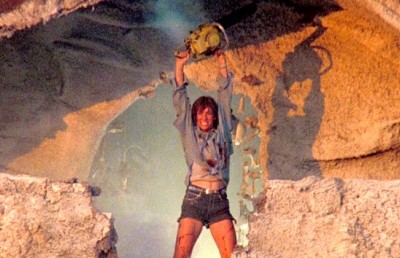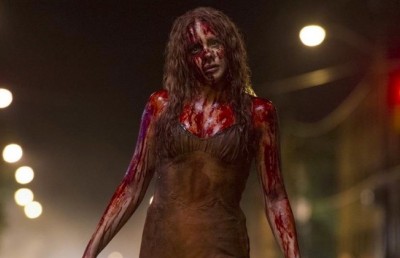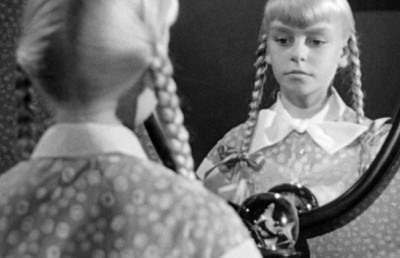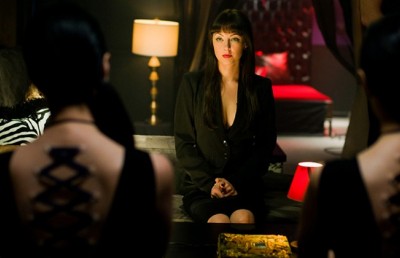Revealing the Hellbound Heart of Clive Barker’s Hellraiser
"Demons to some, angels to others"
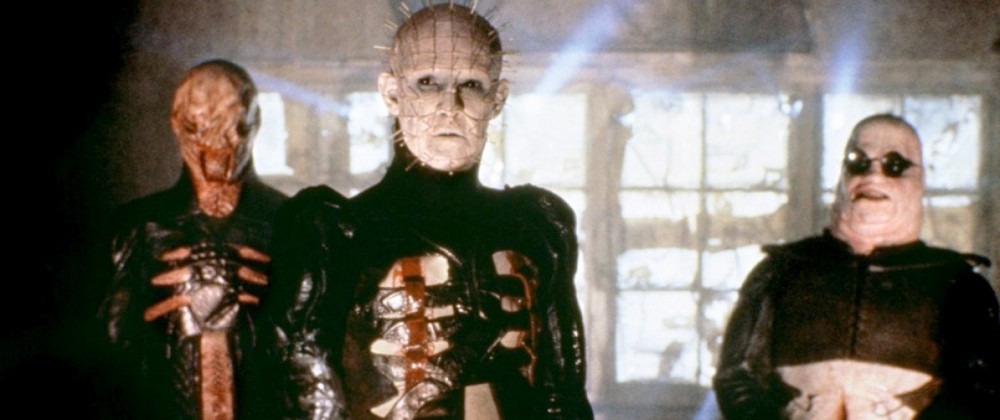
For some of us, monsters are welcome opportunities to be different, to act in anti-normal ways, hideous and beautiful at the same time… – Clive Barker 1
What is it that makes a film queer? Is it the overall content, that degree of camp in the actor’s portrayals, the sexual orientation of the director, or the message that it carries? Sometimes a film is unabashedly and undeniably queer, and other times it may take a more rigorous study to find the elements that identify it as such. Clive Barker’s debut feature Hellraiser (1987) is viewed by many as a landmark feature in the horror genre, but is seldom included in the canon of queer cinema. As Richard Dyer points out in The Culture of Queers , “We will miss much lesbian and gay cultural production if we restrict ourselves to what fits in with our own codes and conventions of lesbian/gay culture.” 2
Clive Barker is an openly gay author, painter and film director, but while elements of his novels are celebrated for their queerness, it often seems that his films are regarded not as queer; they are simply films that happen to be made by a gay man. Even in Harry M. Benshoff’s somewhat exhaustive study Monsters in the Closet: Homosexuality and the Horror Film Barker remains a somewhat marginal figure. Benshoff recognizes Hellraiser for some of its visual characteristics, but comes to the conclusion that “too often the representation of Barker’s monster queers seems similar to those produced by right-wing ideologues.” 3
Benshoff’s book bases itself on the theories put forward by Robin Wood in the late 1970s. In a series of essays, Wood examined the ways in which horror films reflect the surplus repression in contemporary society. This serious study of a genre, one which has generally been regarded as something almost anti-intellectual, attempts to shine a light on the shapes that lurk in the darkness, and the way that the introduction of the Monster disrupts society. According to Wood, the basic formula of the horror film is that “normality is threatened by the Monster.” 4 This equation simplifies the engine that propels the horror film into the parts of the collective psyche that we’d seldom willingly explore, and allows for a discussion on how the genre may be used as a podium to express political ideas that fall far outside the mainstream.
One of the controversial aspects of Wood’s article is the distinction that he makes between what he perceives to be progressive and reactionary movements within the genre. In the third section of the article he unleashes a vicious attack on the early films of David Cronenberg, and states of the deviously subversive Shivers (1975) that “with its unremitting ugliness and crudity, it is very rare in its achievement of total negation.” 5 This notion of reactionary horror continues to be a presence in Monsters in the Closet , and it would appear that this attitude contributes greatly to Benshoff’s general disdain for Barker’s work. While there does seem to be some merit to the criticism that there is a lack of positive queer representations in Barker’s cinematic oeuvre, the logic applied by both Wood and Benshoff remains deeply problematic for a number of reasons. Their argument revolves around the notion that films like Shivers and Hellraiser want us to reject the sights we see as being repugnant or negative, when the reality is that these directors find these images to be compelling and horror film audiences are more likely to be fascinated than disgusted. As Henry Jenkins observes, “The best artists working in the genre don’t just want to provoke horror or revulsion, they want to slowly reshape our sensibilities so that we come to look at some of the most outré images as aesthetically pleasing and erotically desirable.” 6
Even if one accepts that the queer images in Hellraiser film are not positive ones, how does that make these representations reprehensibly reactionary? To a large extent, the queers in Hellraiser belong to a pantheon of hyperbolically monstrous gay characters that appeared long before the outrageous stereotypes seen in John Waters, and extends well beyond the subculture sociopaths that populate the films of Gregg Araki. In his analysis of character construction in gay narrative film, Tom Waugh points out “the irresistible attraction by gay authors to images that seem harmful in the viewfinders of movement ideologues,” and asks the reader to ponder the following question: “Is the attraction to the ‘negative image’ by the gay author simply a question of self-oppression” 7 or is it something else entirely? He goes on to provide a laundry list of possible explanations before concluding that these questions have been side-stepped for too long, and that people have relied “instead on reductive moralism instead of criticism.” 8
Benshoff states that part of Barker’s defense against the criticism that his films are reactionary is to point out that he is “rewriting the genre to focus on its potential to dramatize and evoke social, psychological (and physical) change.” 9 There are elements of metamorphosis in much of Barker’s work, and the author/director asserts that in his early works the “issues of transformation, of paradox and gender ambiguity” 10 are a constant presence. All three of these elements are present in the manner of dress worn by the cenobites in Hellraiser . Jane Wildgoose, who worked in close consultation with Barker while designing the Cenobite costumes, relates that he provided her with copies of the underground publication Piercing Fans International Quarterly and gave her the explicit instruction to make them look like “magnificent superbutches.” 11 To this end they are dressed in leather aprons, with open areas revealing that strips of skin have been removed from exposed parts of their bodies. The extreme nature of the physical injuries they proudly display indicate that their bodies are in a constant state of transformation, while the leather frocks that are equal parts slaughterhouse attire and monastic robes can also be read as dresses. Douglas Bradley, who plays the lead cenobite in the film, points out the element of gender ambiguity in the costumes and states that “it would not, I think, be helpful to consider Pinhead in the context of transvestism, but it is fundamentally important.” 12 Finally, nails, wires and hooks penetrate their flesh, resulting in an aesthetic that is repulsive, but simultaneously fascinating.
When the cenobites move and speak there is a certain degree of attractive nobility in their appearance. These modern primitives may commit visceral acts of savagery, but they also posses a surprising grace and an erudite eloquence. While Benshoff may view these creatures as monster queers that are not at all a positive representation, Jenkins’ position that our sensibilities are being reshaped receives considerable support when one takes into account the way that the cenobites in Hellraiser fit more comfortably into the role of the anti-hero, than that of the monster. When Kirsty is confronted by the cenobites after solving the puzzle box and demands to know who they are, she is met with the reply, “We are explorers in the further regions of experience. Demons to some, angels to others.” This introduction implies that their prey chooses them, and that the violence they unleash is not directionless. If one assumes that their typical victim is someone like Frank, who summons them at the beginning of the film, then it becomes apparent that their talents are actively sought out by hedonists who are looking for new experiences. When they encounter an innocent the cenobites, unlike the psychopaths found in many of the slasher films of the same period, reveal that they are rational beings that can be reasoned with. Their appearance may mark them as outsiders, but they pose no serious threat to normal people who wish to remain normal.
If the cenobites are not truly the monster, then what is? It would appear that the film’s real monster queer is Frank: the undead beast the cenobites unwittingly leave behind. He is the one that truly threatens normality, and this begins long before his resurrection. In a flashback scene Frank returns home for his brother’s wedding and savagely seduces the bride-to-be. He is painted as a pure hedonist who has little regard for others, but it is not until his transformation that he becomes physically dangerous to those close to him.
Tellingly, his name bears a curious resemblance to a much earlier movie monster with queer associations; the re-animated corpse that appears in James Whale’s Frankenstein and Bride of Frankenstein . In the latter of those films, the monster tries to regain some sort of human status. He sheds the mindless automaton appearance he had in the original Frankenstein and makes a futile attempt to assimilate back into society. To this end he learns how to speak, wears a jacket, smokes cigars and seeks a mate that would enable him to conceal his abnormality. Frank goes through much the same process, despite his skinless state he begins wearing a sports coat and smoking, hinting at a link between the two monsters, one that the creators of Hellraiser draw attention to in the audio commentary on the DVD edition of the film. 13
If Frank can be equated with the monster from Frankenstein , then the ‘magnificent superbutch’ cenobites can thus be read as a variant on the mad doctors that brought him to life. In particular there is an interesting comparison to be drawn between the way that Pretorious and the cenobites are coded in the films. Specifically, one can observe that the pre-camp femininity that distinguishes Pretorious as queer is shunted aside in favor of an S/M sensibility that similarly marks the cenobites in Hellraiser . In narrative terms, these creatures are so queer that their influence has left Frank with an overwhelming desire to consume male flesh. This is evident in the way that Julia, acting as his procuress, brings him a series of male subjects to dine upon.
At this point it seems prudent to return to Benshoff’s assertion that Barker “is simply producing more images of monster queers with which to frighten mainstream USA.” 14 It would be ridiculous to argue that Barker isn’t drawing a parallel between the queer and the monstrous, but what must be examined is the essence of that connection. If we consider the narrative arc of the film as a metaphoric coming out tale, then we can see how these barbaric acts that Frank commits with other men are seen through the eyes of a typical heterosexual family who do not understand his needs and desires. His brother’s family simply can’t comprehend why he would want to do these things, and Frank’s ongoing relationship with Julia is that of a conflicted man trying to straighten himself out, so to speak. Frank’s last-ditch attempt is to try to cobble together a family of his own, but it simply can’t work and he is absorbed by the queer community. He cuts all ties to his birth family, and sets off to be with those who accept him.
This interpretation is supported by Barker’s statement that “Horror fiction tends to be reactionary. It’s usually about a return to the status quo – the monster is the outsider who must be banished from the sanctum. But over and over again, I’ve created monsters who come from the outside and who call out to somebody to join them in the sanctum.” 15 Hellraiser accomplishes this feat because the act of transformation is not thwarted and the monsters are not banished; they simply return to the haven of the shadows where they have always lurked, taking their converts back with them. It’s also important to note that not a single one of the queer-coded characters in the film is portrayed as being weak. Initially Frank may seem ashamed of some of the things he finds himself doing, but by the end of the film he is prepared to embrace his new lifestyle – and can even be seen licking his lips while the cenobites welcome him to their world. At this point it is clear that Kirsty may see the cenobites as demons that are literally tearing her family apart, but Frank has finally come to view them as angels that are accepting him into their number. Barker’s concept of a sanctum is an interesting one, and brings to mind the idea that the puzzle box in Hellraiser has a function analogous to that of the mirror in Jean Cocteau’s Orphic Trilogy (1930-1959). Richard Dyer observes that “the equation of mirrors, narcissism and homosexuality can be traced in all of Cocteau’s works, even the least ‘obviously’ homo-erotic,” 16 but the mirror also serves a purpose beyond these thematic associations in that it acts as a gateway between the lands of the living and the dead. The puzzle box in Hellraiser may lack the narcissist reflection that is evident in Cocteau’s mirror, but upon close examination one can see that this is replaced with something equally compelling. While a mirror allows for one to contemplate external appearances, the solving of a puzzle is something that is infinitely more introspective. Keeping in mind the idea of Hellraiser as a tale of a misunderstood man coming to terms with his latent homosexuality, the image of Frank seated in a room, surrounded by candles and looking down at the box in his lap is one that very obviously implies onanistic self-discovery. When he purchases the box in the film’s opening moments, he is responding to the query “What is your pleasure, sir?” 17 At home, alone he manually triggers the internal mechanism which solves this puzzle, and this enables him to cross the threshold and make his homosexual fantasies become flesh. This comparison takes on additional meaning when one considers that the cryptic symbols used in Cocteau’s films have often led to them being compared with puzzles; Carel Rowe even went so far as to say that the structure of The Blood of a Poet “is contrived by Cocteau as a sort of theatrical/cinematic puzzle built of Chinese boxes.” 18
If the homosexual undercurrents in Hellraiser aren’t immediately apparent, then perhaps this isn’t completely the fault of the director. As noted in an interview with The Advocate despite Barker’s “frequent inclusion of gay and lesbian characters in his books, he’s had little success trying to put positive gay characters into the world of horror films. 19 When Barker discusses the censorship issues that the film faced during production, he points out that one change made to appease American authorities was that a sexual encounter between Frank and Julia was changed from an act of sodomy to something deemed more acceptable. While the narrative arc of the film remained intact, other changes were made at the behest of the film’s producers that affected the queerness of the film.
One change that had a measurable impact was the conception of the film’s score. The openly gay experimental electronic act Coil was initially tapped to do the soundtrack. Made up of John Balance and Peter Christopherson, Coil boasts a long history of working with queer film-makers: Christopherson had worked with Derek Jarman as far back as the soundtrack to In the Shadow of the Sun , and at the time of Hellraiser ’s production Coil had recently completed work on the score for Jarman’s The Angelic Conversation (1985). The group would later contribute soundtrack material to films by Gregg Araki and Bruce La Bruce, as well as the direct-to-video instructional title The Gay Man’s Guide to Safer Sex . Their involvement with Hellraiser ended shortly after Hollywood became interested in the project, but Balance provides some insight into what could have been when he relates that “we saw some original footage which we unfortunately didn’t keep but it was really heavy and good, like a sort of twisted English horror film. And then when the Americans saw this footage they thought it was too extreme.” 20
Several of Coil’s unused themes for the film were later compiled and released as The Consequences of Raising Hell . This title is significant because it implies a cause/effect relationship between Frank’s actions and the reactions of his blood relations, which lends further credence to the idea that Hellraiser really is extrapolating on the worst-case scenario of someone trying to come out of the closet. In this regard, it can be concluded that the reactionary elements that Benshoff identifies in the film are not present because the film-maker is embracing these ideas, but because Barker is illustrating the reactionary nature of society itself. In his own words, horror stories and erotic tales “may serve political ends, but they’re a lot more buried, a lot more concealed.” 21
To set the record straight, so to speak, Hellraiser has enough ties to the tradition of queer cinema to justify its inclusion in the canon. The film may represent the monstrous, but as Jenkins observes “representing the monstrous gives popular artists a chance to move beyond conventional modes of representation, to imagine alternative forms of sensuality and perception, and to invert or transform dominant ideological assumptions.” 22 Ultimately Barker may be doing the same thing as David Cronenberg, who says that he identifies more with his middle-class characters after they’ve undergone their transformation and delights in taking them out of their comfort zones so that they can be “dragged kicking and screaming into this new experience.” 23
Hellraiser illustrates that it may be difficult to undergo the metamorphosis from suburban caterpillar to liberated butterfly, but ultimately this process is an emancipating one. On Coil’s Horse Rotorvator album, which contains material from the period where they were involved with the Hellraiser soundtrack, there is a selection entitled “The Golden Section” which quotes Peter Lamborn Wilson’s observation that “the moment of ‘extinction’ in the pleasure of love, resembles that of death, and thus that of the mystic.” 24 It provides food for thought, and leads to the conclusion that the world Frank discovers is one of salvation and sensual delight, even though it may appear as one of unendurable pain to those who are not welcomed into the sanctum. Those left on the outside can see only the aspect of death present in his transformation, but perhaps it is only a moment of extinctive bliss.
Notes
- Barker, Clive and Stephen Jones. Clive Barker’s A-Z of Horror. (New York: Harper Prism, 1998). p. 198 ↩
- Dyer, Richard. The Culture of Queers. (London: Routledge, 2002). p. 34 ↩
- Benshoff, Harry M. Monsters in the Closet: Homosexuality and the Horror Film. (New York: Manchester University Press, 1997). p. 262 ↩
- Wood, Robin. “An Introduction to the American Horror Film.” The American Nightmare, eds, Robin Wood and Richard Lippe. (Toronto: The Festival of Festival, 1979). p. 14 ↩
- Wood 24 ↩
- Jenkins, Henry. “Monstrous Beauty and Mutant Aesthetics: Rethinking Matthew Barney’s Relationship to the Horror Genre.” http://web.mit.edu/cms/People/henry3/horror.html, accessed April 2nd, 2010. ↩
- Thomas Waugh, “The Third Body: Patterns in the Construction of the Subject in Gay Male Narrative Film,” in The Visual Culture Reader, ed. Nicholas Mirzoeff (New York and London: Routledge, 1998). p. 441 ↩
- Waugh 442 ↩
- Benshoff 262 ↩
- Barker 198 ↩
- Resurrection. Featurette on Hellraiser DVD. Anchor Bay, 2000. Cat#: DV11225. ↩
- Bradley, Doug. From “Sacred Monsters: Behind the Mask of the Horror Actor.” http://www.janewildgoose.co.uk/projects_and_publications/gen_sacredmonsters.html accessed April 2nd, 2010. ↩
- Hellraiser . Dir: Clive Barker, 1987. DVD: Anchor Bay, 2000. Cat#: DV11225 ↩
- Benshoff 265 ↩
- Benshoff 262 ↩
- Richard Dyer, Now You See It: Studies on Lesbian and Gay Film 2nd edition (New York: Routledge, 2003). p. 79-80. ↩
- Hellraiser. Dir: Clive Barker, 1987. DVD: Anchor Bay, 2000. Cat#: DV11225 ↩
- Rowe, Carel, “The Influences of Surrealism and Jean Cocteau on the Beaudelairean Cinema,” in The Baudelairean Cinema: A Trend Within the American Avant-Garde. (Ann Arbor, Mi: UMI Research Press, 1982). p. 67. ↩
- Isherwood, Charles. The Advocate, Feb. 21st, 1995. http://www.clivebarker.com/html/visions/confess/nonls/advocate/advocate.htm ↩
- Dickie, Tony. Compulsion number 1, Winter 1992. http://brainwashed.com/coil/writings/compulsion.html, accessed April 2nd, 2010. ↩
- Barker, Clive and Peter Atkins “Other Shelves, Other Shadows: A Conversation (An Interview with Clive Barker)” in Cut! Horror Writers on Horror Film. (New York: Berkley, 1992), p. 14. ↩
- Jenkins ↩
- Cronenberg, David, Cronenberg on Cronenberg. Chris Rodley, ed. (Toronto, Canada: Alfred A. Knopf, 1992). p. 82 ↩
- Wilson, Peter Lamborn. Angels. (New York: Pantheon Books, 1980). p. 86. ↩



